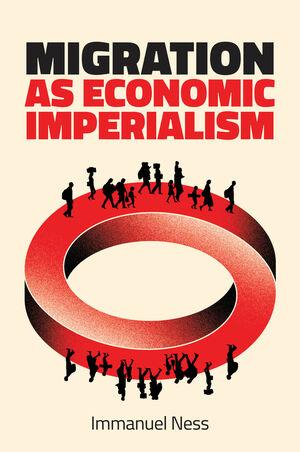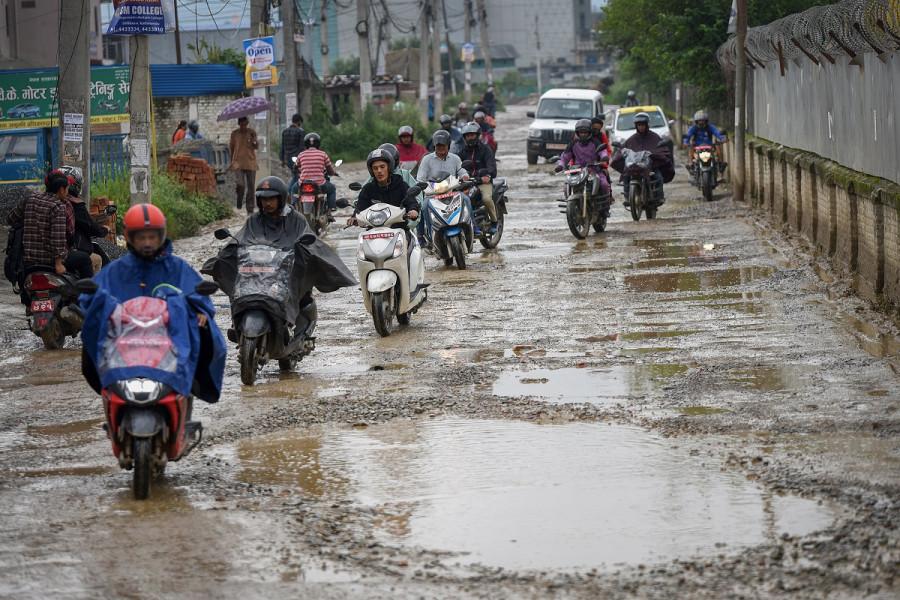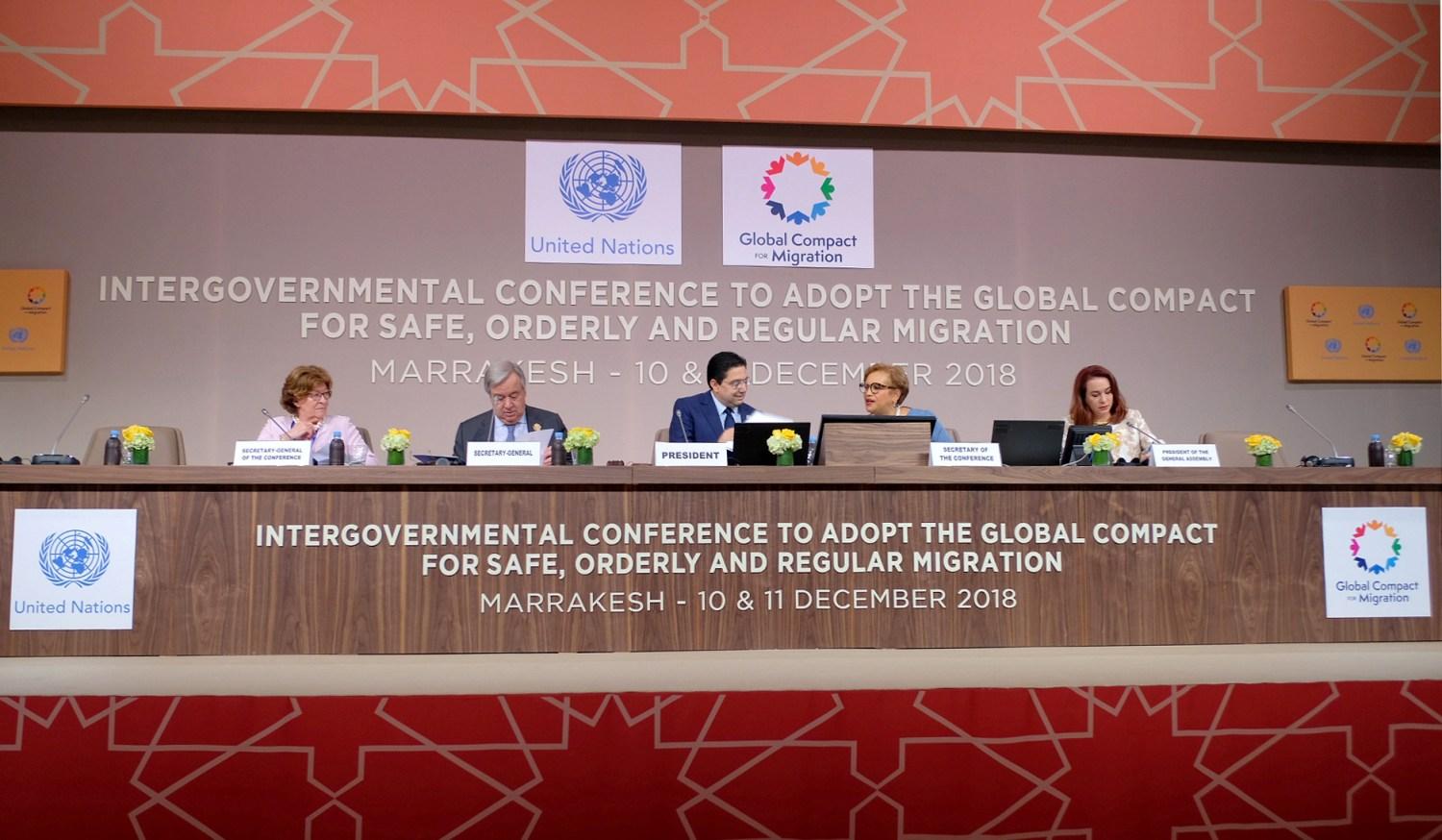
For years now, Fox News and other right-wing media have warned about an invasion of “illegal aliens” into the United States that supposedly threatens national security.
Donald Trump catapulted himself to the presidency in 2016 by vowing to crack down on illegal immigration and to build a border wall, which the Biden administration has extended.
Among the false claims promoted by Trump and his supporters is that Biden’s “Open Border” policy is behind a fentanyl epidemic, though most fentanyl is smuggled into the U.S. through legal ports of entry—and it’s brought in by U.S. citizens, not migrants.

According to Brooklyn College Professor Immanuel Ness, author of the new book Migration as Economic Imperialism (Cambridge, UK: Polity Press, 2023), the xenophobic climate in the U.S. has helped institutionalize a system of global apartheid dividing privileged sectors of the Global North from people in the Global South who migrate primarily because of desperate economic conditions, along with, in some cases, displacement by U.S./NATO wars.

The desperate conditions in the Global South have resulted from centuries of colonial and neo-colonial exploitation by countries in the Global North.
The latter today use institutions like the World Bank and International Monetary Fund (IMF) to impose neo-liberal policies designed to facilitate the extraction of natural resources and monopolization of wealth by multinational corporations.
Loans from these institutions are conditioned on the host government enacting economic austerity measures that cut vital social services and access to public education and health care and that weaken labor unions, thereby keeping wages low and poverty entrenched.
The high migration patterns are driven in part by demographic shifts in the North that necessitate an influx of cheap imported labor to work at menial jobs in industries (agriculture, construction, food service, health care) people in the North generally do not want to work.
Amazingly, many economists—including those working for agencies such as the World Bank, IMF and UN—consider the growth of human migration as a positive social phenomenon.
They claim that the remittances that people send back to their families help spur economic development and provide a substitute for foreign aid or foreign direct investment. Migrants are further said to imbue Western democratic values, which they can transport back to their home countries in fighting authoritarian governments.
Ness’s book effectively challenges such triumphalist views, showing the growth in migration rates to be a direct consequence of entrenched social inequalities fueled by neo-liberal economic policies, which yield little benefit for countries in the Global South.
While remittances may assist individual families, they do not fuel national development.
The latter could only result from coordinated government programs to expand public transportation and infrastructure, facilitate local manufacturing and industrial development, promote land reform, and improve access to quality public education and health care.

Many migrants who travel to the Global North are thrust into hazardous and discriminatory work environments, which they lack basic rights to challenge, and are subject to potential arrest and deportation.
They are separated from their families and communities for long periods, with heavy human cost, and do not upgrade their job skills in a way that would enable them to benefit their home countries if and when they return.
Often, migrants are forced to pay unscrupulous middle-men to get jobs or visas, and do not make adequate incomes to assist their families very much.
Labor unions have historically shunned migrants whom they see as a threat to their rank-and-file members because they are seen to affect a downward drive on wages.
The allure of the West leads to a brain drain from countries, which need skilled workers and undermines social protest movements there as people who might help lead those movements move away.
Rather than fostering development, contemporary migration patterns reinforce an artificial class divide in countries in the Global South and stifle the kind of social solidarity that can result in a successful social movement.
The primary beneficiaries are multinational corporations, which gain access to cheap labor sources even as xenophobic politicians rail against the supposed alien invasion across American borders.

Case Study #1: Nepal
To illustrate his major argument, Ness analyzes the situation in Nepal, a primary organizing center for employment training of prospective migrant laborers, which sends its citizens to work abroad in large numbers.
In the early 2000s, as Nepal’s neo-liberal policies were put into place, World Bank consultant David Seddon (2005) suggested that Nepal was over-dependent on agriculture as the major source of GDP and should diversify by exporting labor, which the country followed. By 2019, remittances contributed to 29.9% to Nepal’s GDP.
The negative consequences were apparent in April 2015 when Nepal experienced a devastating earthquake and the country had a deficit of workers to reconstruct the economy since much of the population between the ages of 18 and 34 was working overseas to earn higher wages.[1]
Ness writes that “Nepal’s economic dependence on remittances from migrant laborers working abroad has not [generally] translated into economic development. Almost all remittances are sent to families for modernizing homes or buying consumer products. The country has yet to spend remittances on building schools, health-care facilities, transport or major development of infrastructure.”[2]
Eerily, visitors to Kathmandu, Nepal’s capital and largest city with a population of about 1.5 million, notice a stark absence of services like public transport, motorways, streetlights and other amenities found in most other major cities in Central and South Asia.
Kathmandu’s narrow streets are poorly maintained and the parks are unkept. Apart from wealthy residents and tourists, the urban area is impoverished. The business districts are dominated by recruitment agencies, banks and ATM machines, vocational training schools, and tourist firms. Few venture out after dark as, in most areas, there are no streetlights.[3]

Case Study #2: El Salvador
El Salvador is another dystopian society where dependence on remittances has given rise to recessions when foreign demand for Salvadoran labor has moderated—like during the world financial recession of 2008-2010 and COVID-19 pandemic.[4]
Because of heavy migration patterns to the U.S., El Salvador has a shortage of workers in health care, education, housing, construction, hotels and restaurants, transport and services.

Essential aspects of economic development are consequently foreclosed.
Ness writes that, for El Salvador, “migration is not a source of development but the consequence of the failure of economic development.”[5] The “primary beneficiaries…are the U.S. economy, which benefits from low wage workers and the Salvadoran oligarchy, which profits from controlling remittance spending and displacing class-conflict…”[6]
What Should Be Done and Where Are We Headed?
According to Ness, the U.S. government has not formulated a migration law to allow foreign workers to enter the country legally as it imposes stringent border-control measures. The result makes the lives of migrants more precarious as they enter the country illegally or overstay their temporary visas and never obtain citizenship rights.
A first step for ameliorating this situation would be formulation of a new law that allows for legal entry and affords basic social protections and human rights to migrant workers, including the right to safe workplace conditions and adherence by employers to existing labor laws.
Ness considers as utopian the call for open borders, which would not alleviate the symptom of global inequality that compels many people to migrate.
Short of a major world socialist revolution, Ness supports adherence to the Global Compact for Migration (GCM) that was passed by the UN General Assembly in 2016 and has been endorsed by 152 nation-states and opposed by only five (Czech Republic, Hungary, Israel, Poland and the United States).
The global compact advocates for a) minimizing the adverse drivers and structural factors that compel people to leave their country of origin; b) fair and ethical recruitment by foreign employers of those who want to move; c) establishing a fair process for legal entry into countries; d) strengthening transnational response to the smuggling of migrants; e) coordinated international efforts to find missing migrants; and f) a commitment to well-managed and secure borders.[7]
Since the GCM is non-binding under international law, most of its provisions have been ignored. Any attempt to make it legally binding would thus be highly significant.

In the 1990s, a small number of trade unions and NGOs established workers’ centers and independent unions in North America and Western Europe chiefly to represent precarious migrant workers in the manufacturing, food service, and construction industries who were largely abandoned by most established trade unions.
Many of these have faded and NGO worker support has evolved primarily into advocacy for improving migrant rights directed at public and elected officials. However, direct organizing and protests, strikes and demonstrations led by worker-led unions would be more effective.
A strengthening of the International Labor Organization (ILO), which is chartered since its founding in 1919 to try to establish international labor standards and resolutions applicable to all UN member states, would also be greatly beneficial.
Since the hardships experienced by migrant laborers are ultimately the consequences of a fundamentally unequal global economic structure, the solution to their predicament lies in the need for a fundamental alteration of the global economy and the empowerment of Global South nations.
For decades, U.S. foreign policy has been committed to preventing that from occurring, though American imperial overreach and U.S. decline combined with initiatives like China’s One Belt and One Road raises hope that a new era of history may be on the horizon.

-
Immanuel Ness, Migration as Economic Imperialism (Cambridge, UK: Polity Press, 2023), 94. ↑
-
Ness, Migration as Economic Imperialism, 97. ↑
-
Ness, Migration as Economic Imperialism, 95. ↑
-
Ness, Migration as Economic Imperialism, 104. Some 2.1 million Salvadorans reside and work in the U.S. and El Salvador has the second highest share of migrants, after Mexico, living in the U.S. ↑
-
Ness, Migration as Economic Imperialism, 106. ↑
-
Ness, Migration as Economic Imperialism, 105. ↑
-
Ness, Migration as Economic Imperialism, 165, 166. ↑
CovertAction Magazine is made possible by subscriptions, orders and donations from readers like you.
Blow the Whistle on U.S. Imperialism
Click the whistle and donate
When you donate to CovertAction Magazine, you are supporting investigative journalism. Your contributions go directly to supporting the development, production, editing, and dissemination of the Magazine.
CovertAction Magazine does not receive corporate or government sponsorship. Yet, we hold a steadfast commitment to providing compensation for writers, editorial and technical support. Your support helps facilitate this compensation as well as increase the caliber of this work.
Please make a donation by clicking on the donate logo above and enter the amount and your credit or debit card information.
CovertAction Institute, Inc. (CAI) is a 501(c)(3) non-profit organization and your gift is tax-deductible for federal income purposes. CAI’s tax-exempt ID number is 87-2461683.
We sincerely thank you for your support.
Disclaimer: The contents of this article are the sole responsibility of the author(s). CovertAction Institute, Inc. (CAI), including its Board of Directors (BD), Editorial Board (EB), Advisory Board (AB), staff, volunteers and its projects (including CovertAction Magazine) are not responsible for any inaccurate or incorrect statement in this article. This article also does not necessarily represent the views the BD, the EB, the AB, staff, volunteers, or any members of its projects.
Differing viewpoints: CAM publishes articles with differing viewpoints in an effort to nurture vibrant debate and thoughtful critical analysis. Feel free to comment on the articles in the comment section and/or send your letters to the Editors, which we will publish in the Letters column.
Copyrighted Material: This web site may contain copyrighted material the use of which has not always been specifically authorized by the copyright owner. As a not-for-profit charitable organization incorporated in the State of New York, we are making such material available in an effort to advance the understanding of humanity’s problems and hopefully to help find solutions for those problems. We believe this constitutes a ‘fair use’ of any such copyrighted material as provided for in section 107 of the US Copyright Law. You can read more about ‘fair use’ and US Copyright Law at the Legal Information Institute of Cornell Law School.
Republishing: CovertAction Magazine (CAM) grants permission to cross-post CAM articles on not-for-profit community internet sites as long as the source is acknowledged together with a hyperlink to the original CovertAction Magazine article. Also, kindly let us know at info@CovertActionMagazine.com. For publication of CAM articles in print or other forms including commercial internet sites, contact: info@CovertActionMagazine.com.
By using this site, you agree to these terms above.
About the Author

Jeremy Kuzmarov holds a Ph.D. in American history from Brandeis University and has taught at numerous colleges across the United States. He is regularly sought out as an expert on U.S. history and politics for radio and TV programs and co-hosts a radio show on New York Public Radio and on Progressive Radio News Network called “Uncontrolled Opposition.”
He is Managing Editor of CovertAction Magazine and is the author of six books on U.S. foreign policy, including Obama’s Unending Wars (Clarity Press, 2019), The Russians Are Coming, Again, with John Marciano (Monthly Review Press, 2018), Warmonger. How Clinton’s Malign Foreign Policy Launched the U.S. Trajectory From Bush II to Biden (Clarity Press, 2023); and with Dan Kovalik, Syria: Anatomy of Regime Change (Baraka Books, 2025).
Besides these books, Kuzmarov has published hundreds of articles and contributed to numerous edited volumes, including one in the prestigious Oxford History of Counterinsurgency .
He can be reached at jkuzmarov2@gmail.com and found on substack here.

